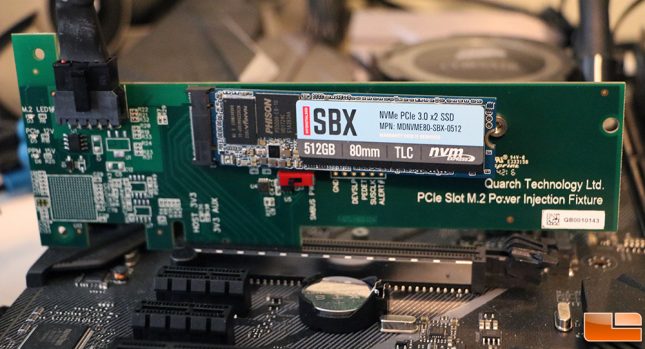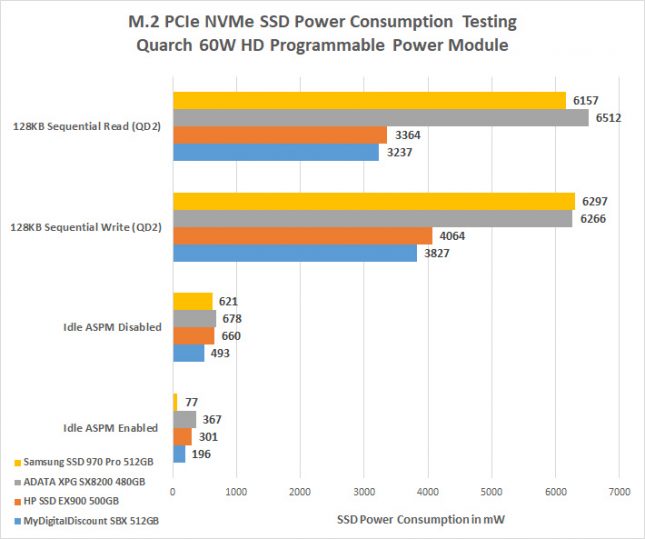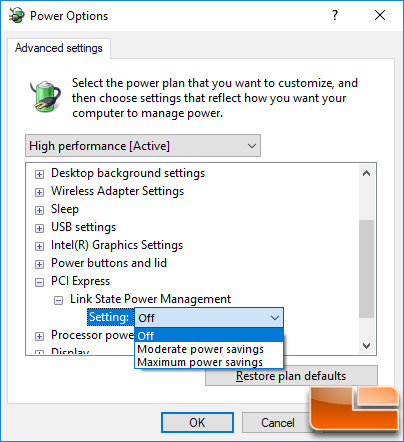MyDigitalSSD SBX 512GB NVMe SSD Review
MyDigitalSSD SBX Power Consumption
The last area we wanted to test is power consumption and for that we have teamed up with our friends at Quarch Technology over in the UK! Legit Reviews now has a Quarch HD Programmable Power Module in-house for testing all SSDs (SAS, SATA and PCIe). This is a fully programmable power supply and measurement tool comes with power injection fixtures that stop power delivery from system, so all power comes from the power module and can be accurately recorded. Each rail can be programmed from 0 to 120% of its nominal voltage and all sorts of advanced power testing can be done.
We just started playing with the power module, so the MyDigitalSSD is one of the first that we have ever tested on. We used IOMeter to run a 128KB 100% sequential read/write on the drive at a Queue Depth of 2 and recorded the highest power draw recorded. The only power consumption information that MyDigitalSSD lists is that the SBX series uses less than 5W of power. Our idle power draw was found to be 0.493 Watts at idle and at load we were getting less than 4 Watts of power in our tests. This is less power than the DRAM-less HP SSD EX900 500GB drive was using, so this is a very power efficient drive.
During our advanced power testing testing we enabled PCI Express Active State Power Management (ASPM) on our desktop board and in Windows 10. Enabling ASPM allows thr PCIe link to be slowed down to save power when not being used. When enabling this feature the average idle power of the MyDigitalSSD drive dropped from 493mW to 196mW, which is great. The added benefit of enabling ASPM is that the drives temperature dropped from 40C down to 34C, a 15% decrease.
Here is a screen capture of what happens to power on our test system when you go from ‘Maximum Power Savings’ to ‘Off’ under Windows 10 power options when testing with on our programmable power module by Quarch Technology.
We did notice that the SBX’s power spikes up about 1W every so often and it looks like the drive is waking up from idle every so often to perform garbage collection tasks or maybe some sort of SLC cache flushing. Each wake up period lasts 200ms and we’ve recorded up to five per minute. This is the first drive of the four that we have tested so far that wakes up to handle background processing like this. Our power consumption results for idle are averages that include these power spikes.
Let’s wrap this review up!





